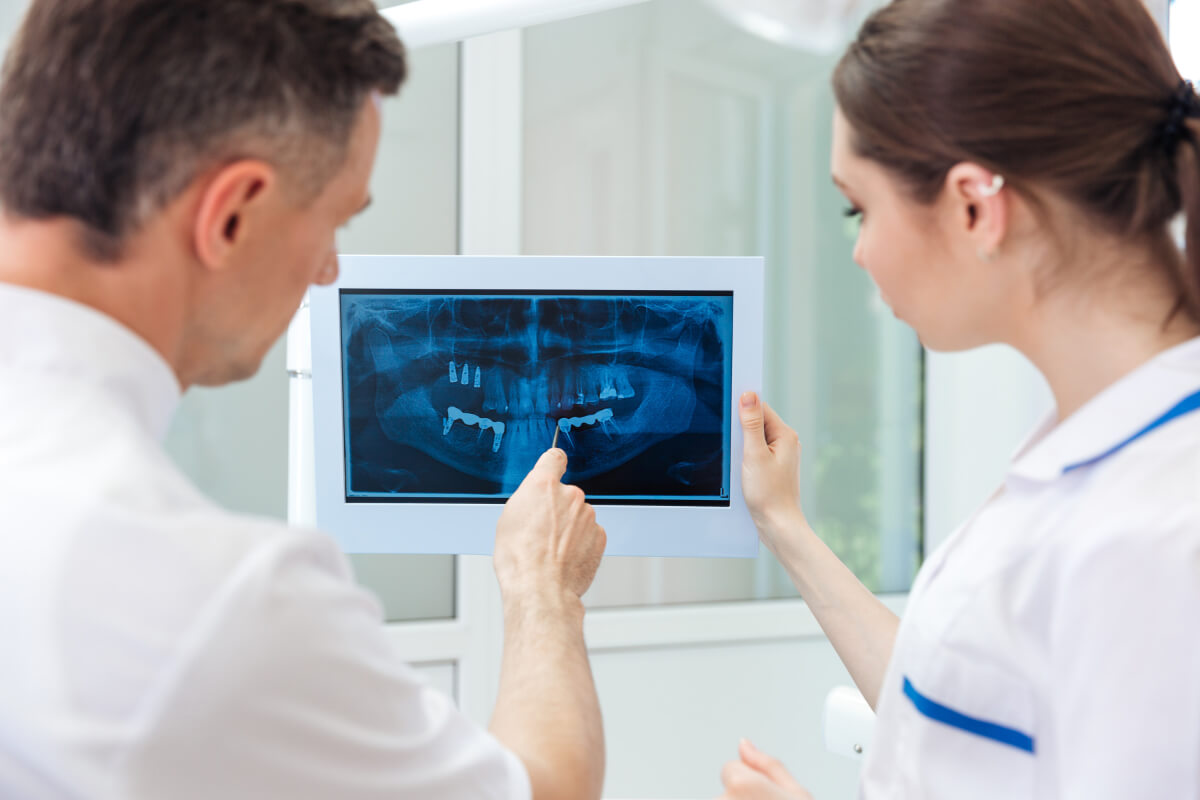May 4, 2022

There is no disputing the value of a digital x-ray for a possible fractured bone in your leg, but what about your mouth? Why does your dentist give you that strange-looking, obscenely heavy jacket and have you slobbering over a plastic bite plate? What exactly are they searching for there? And is everything safe?
The truth is that dental x-rays in Winnipeg are extremely useful. Their role is to determine the situation in your mouth or get a closer look. You may be wondering why x-rays are required if you have good oral health or a dentist who is trained to assess your oral cavity themselves.
What are Dental X-Rays?
X-rays, often known as radiographs, give your dentist a close-up view of the conditions inside your mouth. Dentists understand that a visual examination alone is insufficient to give patients the finest care possible. Dental x-rays are a great diagnostic tool that can help your dentist in catching any infection or damage caused to your oral health that isn’t noticeable to the bare eye. Dentists can correctly detect and dine dental abnormalities with the aid of digital x-rays near you, allowing them to secure issues in the mouth rather than just respond to them.
What are Dental X-rays Used For?
In an x-ray, a dentist can see everything from the tip of the roots to the bones under your gums, in addition to the visible portion of the tooth. These x-rays help your dentist in Winnipeg identify any isolated or unique symptoms you might be experiencing.
This visual information is used by dentists to study a number of conditions, including cavities and bone loss, cysts, abscesses, the degree of decay, gum disease, and tumors. Along with impacted or missing teeth, or wisdom teeth your dentist provides you with quicker, more effective care.
How Does a Dental X-ray Work?
X-rays are routinely taken during a routine dental appointment. This typically includes two to four bitewing x-rays, which supplies your dentist with additional information on the crown areas of your teeth and allows them to look for decay. With a bite plate in between your teeth and X-ray machine positioned on either side of your face, these radiographs are taken.
Using panoramic x-rays, which are obtained from the outside of your mouth, your dentist near you can see a large-scale view of your whole oral cavity. The equipment will turn around your head’s circumference during a panoramic scan to obtain a complete image. This form of x-ray shows all of your teeth, as well as the sinuses and jaw bones, and can be a great way to find any irregularities or jaw disorders you may have.
X-rays utilized for oral health purposes have low radiation levels and are safe. Dentists cover your body with a leaded apron and, if necessary, a thyroid collar to eliminate the risk. To reduce dangers and allow for the least amount of radiation possible, several safety measures are performed. Both treatments are quick, painless, and only take a few minutes of your time. But the advantages can endure forever.
How Often Should You Get an X-ray?
The basic minimum at which you should obtain an x-ray is at your yearly or bi-yearly dentist appointment and cleaning, though this may vary depending on the individual. Due to the unpredictable and delicate state of children’s teeth, more x-rays are frequently needed than for adults. To make sure their oral health is at its best and establish a baseline for future visits, new patients generally need more x-rays than usual.
Come into Our Dental Practice
Make an appointment with Polo Park Dental Centre right away if you haven’t had an x-ray in a while and want to take this preventative action to ensure that your oral health is at its best. We are excited to meet you and are delighted to look after you.
 1440 Jack Blick Ave #104, Winnipeg, MB R3G 0L4, Canada
1440 Jack Blick Ave #104, Winnipeg, MB R3G 0L4, Canada 204-774-2521
204-774-2521


